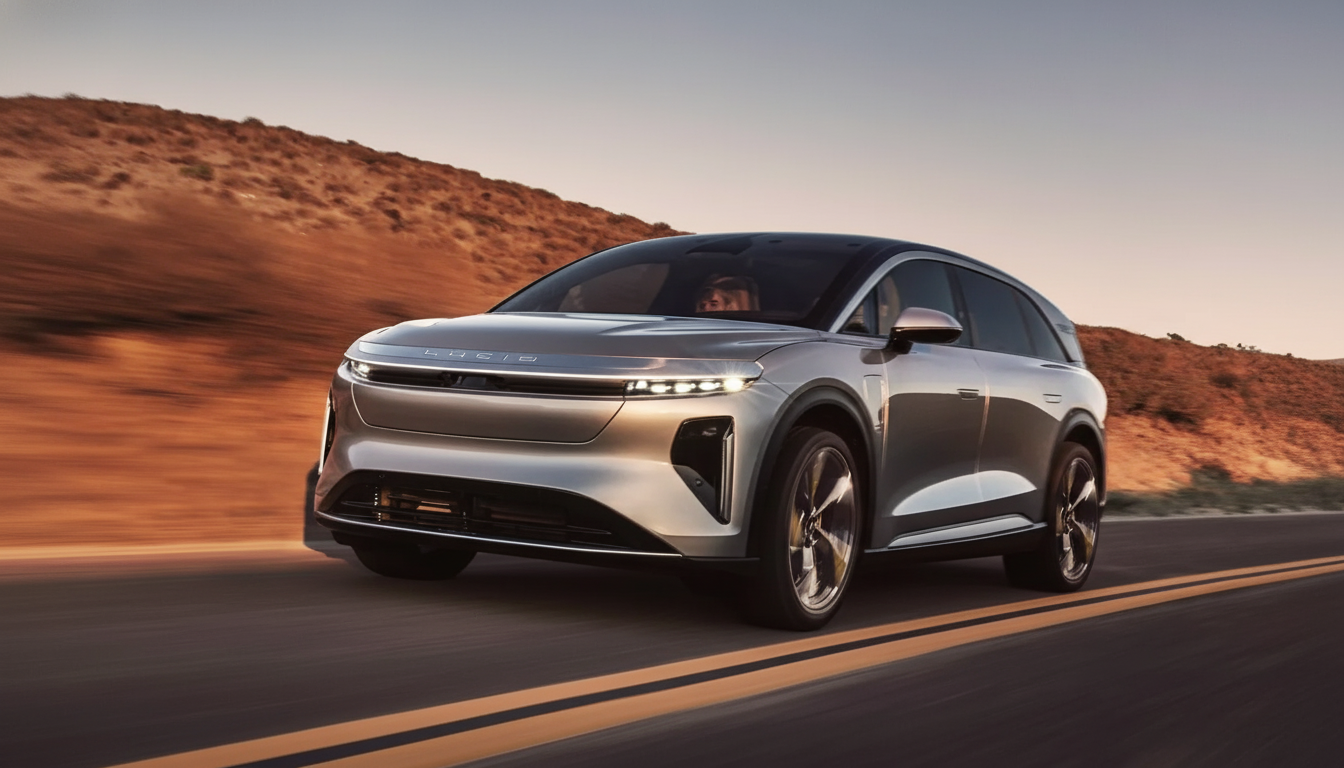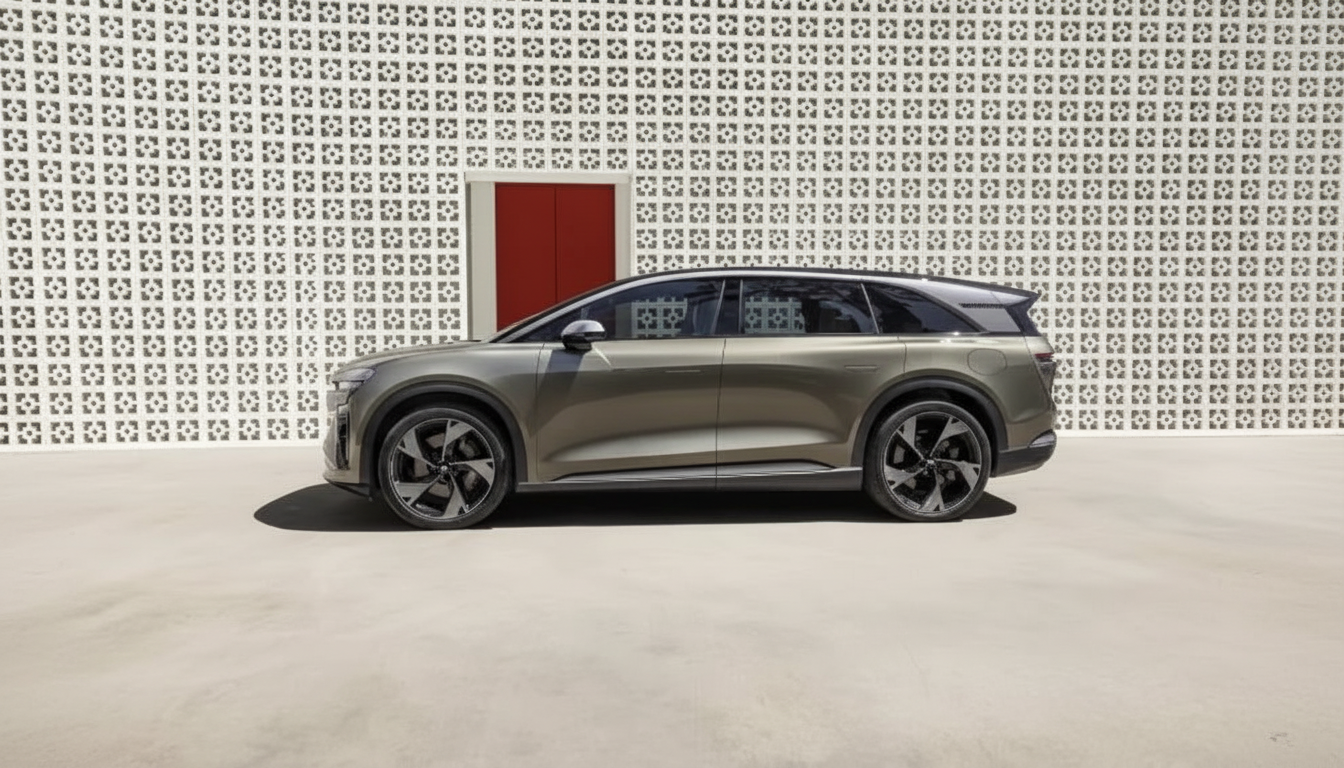Uber is staking its robo-fare in San Francisco with the driverless, premium robotaxi on Lucid Motors’ Gravity SUV and Nuro’s self-driving system—putting them head to head with incumbent Waymo in that company’s backyard. The move mixes Uber’s marketplace scale with a luxury EV platform and a new autonomy partner, which suggests that this is about an effort to differentiate not on price, but on experience.
Why San Francisco, and why launch this service now?
San Francisco is still a proving ground of sorts for robotaxis. Dense, data-intensive and notoriously unfriendly to autonomy stacks, the city has already steered the industry’s course with tough California DMV regulations and California Public Utilities Commission permits covering commercial service. For Uber, launching here is both a stress test and a boast: if there’s room for a high-end driverless ride in San Francisco, it can work anywhere else.

Uber, Lucid and Nuro have been quietly laying the groundwork. Uber invested $300 million into Lucid, and committed to purchasing at least 20,000 Gravity SUVs in an order worth billions over six years to form the backbone of a high-end service. Those vehicles will be loaded up with Nuro’s autonomous stack and driven by Uber or its fleet partners. The companies say a fleet of some 100 vehicles will be tested before public service begins; along the way, closed-course and on-road testing (paired with simulation work) are part of verifying performance and safe operation.
What makes this robotaxi a premium experience
Lucid’s Gravity, by contrast, offers a robotaxi interior that features space, materials, and ride quality. That matters. In J.D. Power and Deloitte surveys, willingness to take a driverless ride increases when the vehicles are perceived as safer, quieter and more comfortable—attributes luxury EVs tend to deliver in abundance. Anticipated: Larger screens, more refined cabin acoustics and—perhaps—tiered experiences that parallel Uber Black and Reserve, from concierge-style pickup to in-cabin personalization.
Premium positioning could also result in blunted near-term unit economics. Autonomy hardware and compute are still expensive; by applying those to a high-end platform with higher average fares that can close the per-mile cost gap as utilization goes up. Consultants at McKinsey and BCG have observed that initial robotaxi rollouts tend to go for dense corridors and higher-yield segments, before spreading farther out as the system matures—a playbook this launch seems to be following.
The Stronghold for Waymo Faces a Fresh Threat
Waymo has a stranglehold on the driverless market in San Francisco and has branched out into commercial operations throughout the Bay Area as well as Phoenix, Los Angeles, Austin and Atlanta. The company has spent years on mapping, safety cases and fleet orchestration, and it has reported a steady increase in rider-only trips across multiple cities. It also enjoys high brand awareness among early adopters.
But Uber comes with unrivaled demand aggregation and routing expertise. Including robotaxi supply directly into the Uber app—in addition to UberX, Comfort and Black cars—provides immediate on-ramps and flexibility around pricing. Uber and Waymo already work together in Phoenix, and have tested services in other cities. The San Francisco rollout shakes things up: Collaboration in certain markets, head-to-head competition in Uber’s biggest ride-hailing backyard.

Safety, Permits And The Long Road To Scale
It takes more than clever routing to win in San Francisco—it takes regulatory stamina. Firms will also have to hold autonomous vehicle permits from the California DMV and obtain CPUC approval for commercial service, supported by safety reports, operational design domain restrictions and incident reporting. And after a widely publicized suspension of driverless testing upended the field, regulators are stepping up their scrutiny of how emergency vehicles are handled in the vicinity, fallback procedures and remote operation.
Nuro’s pivot from low-speed delivery pods to autonomous passenger tech raises the stakes for validation. And those three will surely rely on high-fidelity simulation, adversarial testing and staged operational rollouts. More and more, industry-standard metrics focus on quantifiable safety measures—unprotected left-turn ramifications, disengagements put in context, post-incident response remedies—not just the number of headline miles. Independent evaluations conducted by groups like the National Highway Traffic Safety Administration and academic partners can also help build trust.
What Riders And Drivers Should Anticipate
The pitch to riders is obvious: a smoother, quieter, more predictable premium ride that appears inside the app they already use. Integration with Uber One, airport processes and business travel tools might speed adoption. Early pricing will probably be roughly what one might expect from Uber Black and premium tiers, until competition and utilization push the fare toward something roughly comparable to a standard ride on some routes.
For human drivers, the effect should at first be piecemeal. The supply of robotaxis will be centralized to certain neighborhoods and times, when demand predictability is the highest. In the past, new autonomous supply has simply absorbed overflow demand and late-night trips before peak driver earnings even meaningfully overlap with it. Uber will ultimately be forced to disclose transparent marketplace impact as it integrates driver incentives with autonomous fleet deployment.
The bigger strategy behind Uber’s autonomy push
Uber has quietly built out a broad autonomy portfolio—for ride-hailing, delivery and trucking—with partnerships with more than a dozen companies around the globe; announced deals with May Mobility and Volkswagen, as well as Chinese players like WeRide (another company that The Times has covered here), Baidu, and Momenta. The Lucid-Nuro alliance is that strategy’s highest top-shelf offering, the chance to show what a high-end driverless experience can look like as Uber figures out how to mix autonomous and human-driven supply at the scale of a city.
If Uber can clear regulatory hurdles, performance gates and provide a ride that feels significantly better, San Francisco might be the template for premium autonomy in dense cities. If not, well, it will be a high-profile demonstration that robotaxis still live or die on trust, not just tech.

